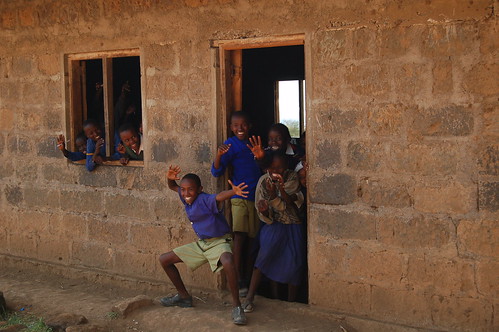Imagining Better Conversations
A few days ago Will Richardson shared on his blog a conversation that he'd had with his daughter. I found his post to be very discouraging and, unfortunately, indicative of what often masquerades as education in many classrooms. I thought about this conversation for a long time and then decided to try to re-write it based on my ideas of what young people in 2009 should be doing in English class. The part in blue is the original conversation from Will's blog. The remaining part is my idealized view of what should have happened:
Heard while driving home from Tess’s basketball game earlier.
“But Dad, I’m the only one in my class who doesn’t have a cell phone.”
“I know Sweetie, but that’s not a great reason for getting one.”
“But Dad, it’s like embarassing.”
“I’m sorry Tess, really. Mom and I will talk about it again, but for now…”
“Ugh.”
Silence for a few minutes.
“So, anything happen at school today?”
“No.”
“Nothing?”
“Ugh. We got a writing assignment.”
“A writing assignment? What kind?”
“We’re learning persuasive essays.”
“Persuasive essays? Well that’s kind of appropriate.”
“Like, what do you mean?”
“Well, don’t you have something you want to persuade me to do?”
She looks at me and smiles. “Cell phone!” Pause. “Ugh.”
“What?”
“I can’t do it on cell phones.”
“Why not?”
“Because our teacher said we should focus on things we’re really interested in.”
“Aren’t you interested in getting a cell phone?”
“No. Well, yes … but this is … different. I wanna write about sharks.”
“Makes sense. You know a lot about them. But how would you make your essay persuasive?”
“People are prejudiced against sharks. Everyone thinks sharks are bloodthirsty, violent creatures. It’s not true. Not all of them are ... and they can work together, too. I wanna write about that.”
“And your teacher said yes?”
“She did, and … get this, she said I could interview this expert on sharks from the University of … uhm, I forget. But she is a researcher and an expert on sharks.”
“Is ... she coming to do a talk at school?”
“No, dad. I will be meeting with her online, and with some other researchers that work with her.”
“Online? Just you? What about other kids?”
“They have other topics, so they’re working with other people.”
“Online?”
“Yes, online.”
“So, you’re going to find out more about sharks from this researcher in … where is she again?”
“Somewhere in California, I think … yes, she has a blog and some of her research is also online. She posted movies from her previous research trips on YouTube … we’re chatting tomorrow during class.”
“That’s soon!”
“We have to meet this week. She’s leaving for a research expedition, for two months …”
“… so you won’t be able to get in touch with her after she leaves.”
“Well, she’ll be sending updates to her lab from her cell phone … I guess her assistant could email them to me.”
“… or you could get your own cell phone.”
“Exactly!”
Paulo Freire always claimed that we should use our imagination to reframe our reality - to see beyond that which we find oppressing. This re-working of Will's conversation is my attempt to imagine a better classroom and to emphasize that what teachers need today - and more today than at any time in the past - is imagination.




 (Click
(Click 

